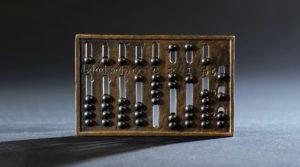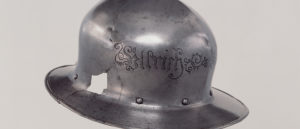
How the number 7 came to Europe
For a long time, we were very reluctant in our part of the world to accept the Hindu-Arabic numeral system. Even the mathematician Fibonacci had trouble convincing people to change their attitude. But the economic benefits were so great that all resistance was eventually abandoned.
The Swiss can handle numbers fairly well. Swiss banks are still among the most highly regarded financial institutions, and we’re also heavily involved in the global economy. We owe this to, among others, the Italian Leonardo Pisano (1170-1240), better known as Fibonacci. Originally from Tuscany, this mathematician brought Hindu-Arabic numerals to Europe in the 13th century. He had come across the system in North Africa, where he had travelled with his father, Guglielmo Bonacci, a notary. In what is now Algeria, Leonardo came to know and appreciate the decimal system. This system enabled merchants to do their calculations by a more straightforward procedure.
Before Fibonacci, the seven Roman numerals (I, V, X, L, C, D, M) were used. Because these numerals always had the same value, mathematical calculations were complex even from four-digit numbers, and it was difficult to set out arithmetic operations in any sort of legible form. For example, the sum 2688 + 2786 = 5474 would have looked like this: MMDCLXXXVIII + MMDCCLXXXVI = MMMMMCDLXXIV. Doing arithmetic was a great way to end up with cramping in your fingers and a raging headache!

When dealing with large numbers the Romans did use abbreviations, but these varied from region to region and were therefore unsuitable for international trade.
Despite the advantages in terms of keeping accounting records, it took a long time for the system that Fibonacci brought to Italy to become established. The numbers 1, 2, 3, 4, 5, 6, 7, 8, 9 and the 0 were viewed with suspicion in our latitudes. The Church called them demonic symbols of the Arabs, and some cities even banned them. In Florence, for example, people argued that Arabic numerals were easier to falsify than Roman ones. The poor legibility of the figures in merchants’ ledgers was also criticised. In 1299, the city banned the use of Arabic numerals in contracts and official documents.
The zero in particular had a tough time. The Italians would have no truck with a number that is not a number at all, and yet can increase a value tenfold. People were also suspicious of negative figures. However, the merchants were quickly won over by the arithmetical advantages of the Hindu-Arabic numeral system, and at some point even the toughest sceptics had to concede that it was easier to do calculations using these new numbers. From Italy the system spread northwards along the trade routes, reaching Switzerland in the 15th century.




